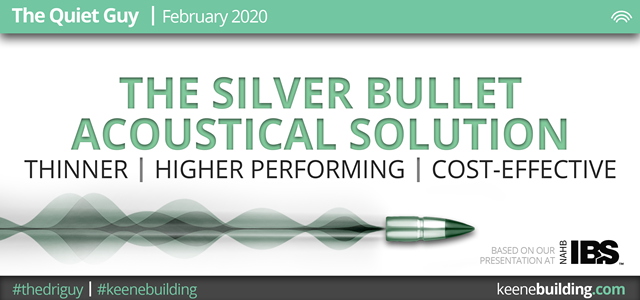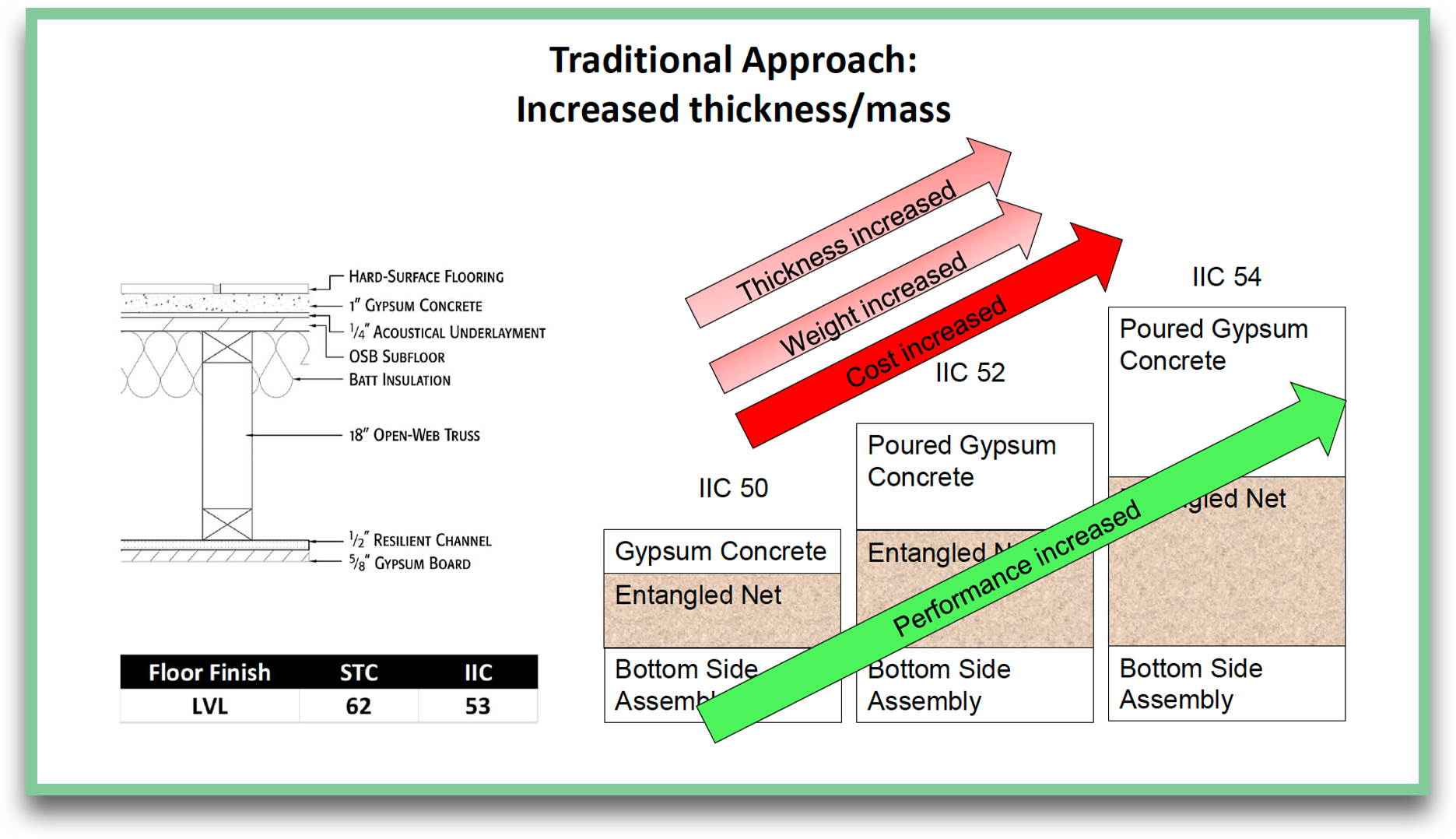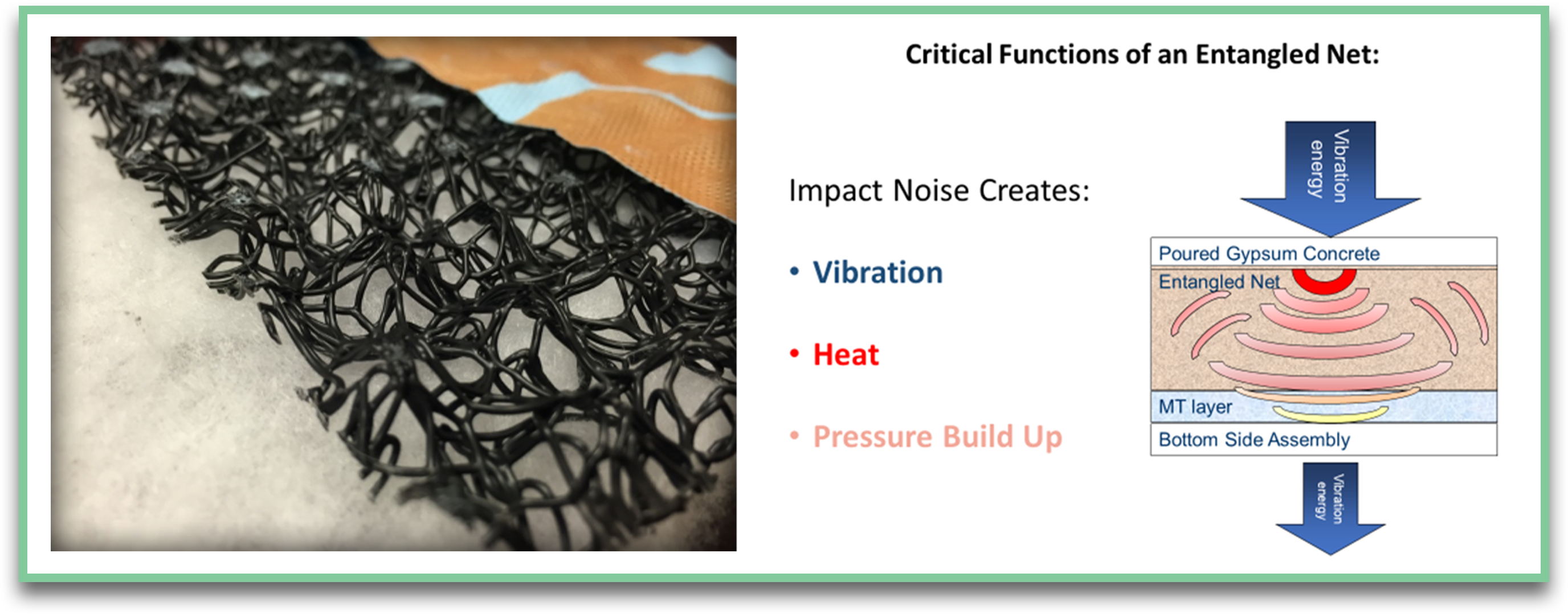
Though it’s unlikely that your upstairs neighbors are actually rolling bowling balls around the hardwood, it can certainly seem that way at times. And thanks to the YouTube creators at "Above Average" Productions, we can actually see what that would look like (To watch the full video, click here). When it comes to multi-family living, one of the biggest complaints from residents is low-impact noise.
In Building Acoustics, impact sound noise is defined as the level of noise in the receiver room during the excitation by foots steps, moving furniture or falling objects.
Impact noise is one of the hardest things to stop. When someone is jumping, running, or dropping objects in the room above you, there are a lot of noises bring produced. Wood framing is very conductive, so the transmission noise coming from the person above you passes through very easily. In addition, your ceiling drywall is rigidly attached to this vibrating frame. So, once the vibration enters your ceiling, it goes directly to the drywall and then into your ears.
TRADITIONAL APPROACH
The typical solution for reducing impact noise involves adding an entangled net to absorb most of the sound before it can pass through the ceiling/walls. Certainly, it would make sense to say that a thicker entangled net would absorb more noise. And as we mentioned in our blog from December, mass law states that the denser the assembly the more airborne sound that can be attenuated (i.e., 8 inches of concrete will stop more airborne sound than 4 inches of concrete).
Yes, increasing the thickness and mass of your assembly will increase the performance with regard to noise control. However, there is one more factor that is sure to see an increase in that situation; the cost.

Luckily, Keene Building Products has come up with a solution that is thinner, higher performing, and more cost-effective than the traditional approach.
MUFFLING TECHNOLOGY
The first step of controlling impact noise is to isolate the connections.
Increased ISOLATION is the key factor in increasing IIC in the floor/ceiling assembly. This can be achieved by a variety of methodologies, all of which have varying effects on the different frequency ranges that measure impact sound. This is typically done with sound mats, resilient channels and or isolation clips. By isolating or “decoupling” the connections of one construction component to another, the vibration paths for impact sound to travel are reduced, if not terminated entirely.
Keene Building Products’ Quiet Qurl® sound mats are a three-dimensional entangled net plastic that reduce contact with the structural subfloor by 90%.

Quiet Qurl® sound mats create less points of contact and airspace to dissipate the heat that is created. In addition, our revolutionary Muffling Technology (MT) fabric helps to dissipate the pressure build up in the sound wave.
Quiet Qurl® sound mats come in a variety of thicknesses, with or without the MT fabric, to satisfy a variety of sound controls needs. In combination with our Dependable GSL Gypsum Concretes, our Keene sound systems create the quiet space your customers expect.
As illustrated below, these different sound graphs demonstrate how utilizing the MT technology, along with a thinner gypsum mass, increases sound performance while using a thinner sound mat and thinner gypsum to save you money.
GRAPH - 1: GRAPH - 2: GRAPH - 3:
013 MT vs. 025 025 MT vs. 025 040 MT vs. 040
THE SILVER BULLET
In folklore, silver bullets were the only means for killing werewolves and other spooky creatures. They became a staple as the only thing left in the tracks of the Lone Ranger after riding into town to miraculously thwart evil and save the day.
Today, we use the term 'silver bullet' to refer to an action which cuts through complexity and provides an immediate solution to a problem. The allusion is to a miraculous fix, otherwise portrayed as 'waving a magic wand'.
Is there a way to wave a magic wand and eliminate all impact noise issues? No.
But if you want to cut through the complexity and find an immediate solution to your problems with impact noise, Keene Building Products has got your silver bullet.

STC (Sound Transmission Class) represents a material or product’s ability to block sound from travelling through a wall, ceiling, floor or other building assembly – in other words, to stop airborne noise transferring from place to place. It is the most common sound measurement system in North America, which is why you’ll see it associated with so many soundproofing products. The higher the STC rating, the better a material’s ability to block sound.
IIC (Impact Isolation Class) measures a floor assembly’s ability to absorb impact sound (i.e., footsteps). It is represented with an integer, or whole number. A larger number means more impact sound is being blocked. The number is calculated based on sound reduction in 16 frequencies from 100 to 3150 Hz.